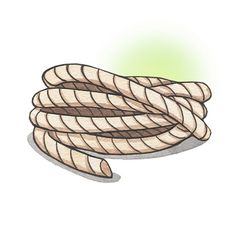
Rope shaping is an art and skill that has been utilized for centuries in various fields, from maritime practices to decorative crafts. This versatile technique involves manipulating rope to create functional and aesthetic forms. Let’s explore the world of rope shaping and its applications.
Techniques:
- Knotting: The most basic form of rope shaping. Common knots include the bowline, clove hitch, and figure-eight.
- Splicing: Joining ropes by interweaving their strands. Types include eye splices, short splices, and long splices.
- Whipping: Binding the end of a rope to prevent fraying. Can be done with twine or tape.
- Coiling: Neatly storing rope by winding it in circles. Techniques vary based on rope type and intended use.
- Braiding: Interweaving multiple strands to create decorative or stronger ropes.
- Macramé: An ornamental knotting technique used for decorative purposes.
Applications:
- Maritime: Crucial for sailing, involving knots for rigging, mooring, and cargo securing.
- Climbing and Mountaineering: Specialized knots and coiling techniques ensure safety.
- Decorative Arts: Used in creating wall hangings, plant hangers, and other home decor items.
- Fashion: Incorporated into jewelry making and clothing design.
- Practical Household Use: For bundling, hanging objects, or creating custom storage solutions.
- Theatrical Rigging: Essential in stage design and management.
- Animal Handling: Used in creating leads, halters, and other equipment for livestock.
Materials:
Different ropes suit various shaping needs:
- Natural fibers (cotton, hemp, jute) for traditional and decorative work
- Synthetic materials (nylon, polyester) for strength and weather resistance
- Specialized ropes for specific applications (e.g., dynamic ropes for climbing)
Learning and Practice:
- Start with basic knots and progress to more complex techniques.
- Practice regularly to develop muscle memory and dexterity.
- Experiment with different rope types and thicknesses.
- Join workshops or maritime training for hands-on experience.
- Utilize online resources, books, and video tutorials for self-learning.
Safety Considerations:
- Always inspect ropes for wear and damage before use.
- Use appropriate rope types for load-bearing applications.
- Be aware of the working load limit of your ropes.
- In critical applications (like climbing), seek professional training.
Rope shaping is not just a practical skill but also a form of artistic expression. Whether you’re a sailor, a crafter, or simply someone interested in learning a new skill, rope shaping offers a world of possibilities to explore and master.




